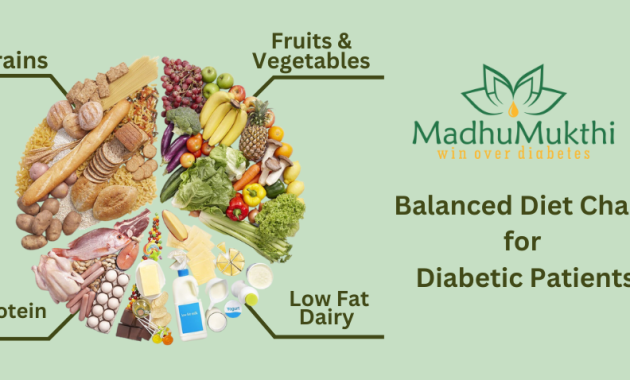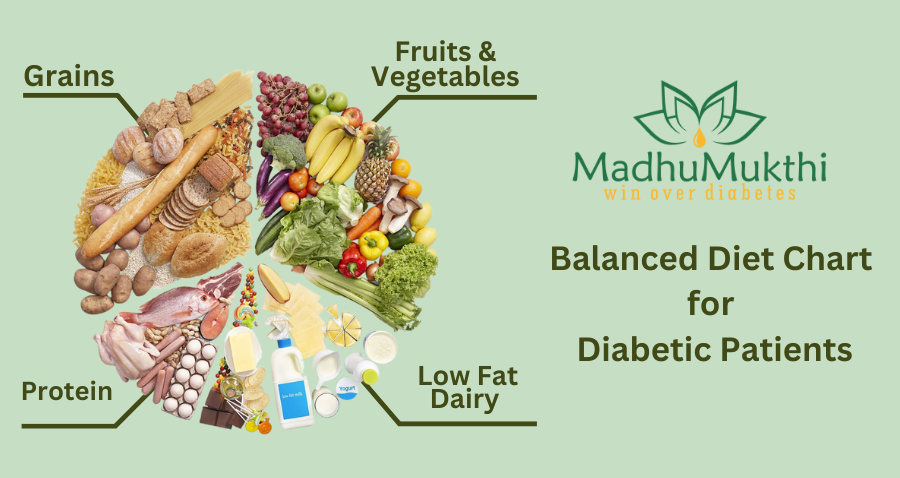
How to Balance Diabetes With the Foods You Already Love
The diagnosis of diabetes can feel like a life-altering event. It often brings with it the fear of dietary restrictions and the perception that favorite foods must be permanently abandoned. However, managing diabetes doesn’t have to mean giving up the foods you love. It’s about making informed choices, understanding how different foods affect your blood sugar levels, and finding a balance that supports your health and well-being. This article explores practical strategies for balancing diabetes with the foods you already enjoy, emphasizing mindful eating, portion control, and making smart food substitutions.
Understanding Diabetes and Its Impact on Diet
Diabetes is a chronic metabolic disorder characterized by elevated blood sugar levels. This occurs when the body either doesn’t produce enough insulin (Type 1 diabetes) or can’t effectively use the insulin it produces (Type 2 diabetes). Insulin is a hormone that allows glucose (sugar) from food to enter cells for energy. Without sufficient insulin, glucose builds up in the bloodstream, leading to various health complications.
The cornerstone of diabetes management is dietary control. The foods you eat directly impact your blood sugar levels. Carbohydrates have the most significant effect, as they break down into glucose. However, fats and proteins also play a role. The goal of a diabetes-friendly diet is to maintain stable blood sugar levels, prevent spikes and crashes, and reduce the risk of long-term complications such as heart disease, kidney disease, and nerve damage.
The Key Principles of a Diabetes-Friendly Diet
Adopting a diabetes-friendly diet doesn’t mean deprivation. It’s about making informed choices and creating a sustainable eating plan. Several key principles guide this approach:
- Focus on Whole, Unprocessed Foods: Prioritize fruits, vegetables, whole grains, lean proteins, and healthy fats. These foods are generally lower in carbohydrates and higher in fiber, vitamins, and minerals.
- Control Carbohydrate Intake: Be mindful of the amount of carbohydrates you consume at each meal and snack. Work with a healthcare professional or a registered dietitian to determine the appropriate carbohydrate target for your individual needs.
- Choose Complex Carbohydrates: Opt for complex carbohydrates like whole grains, legumes, and starchy vegetables over simple carbohydrates such as white bread, sugary drinks, and processed snacks. Complex carbohydrates are digested more slowly, leading to a more gradual rise in blood sugar.
- Monitor Portion Sizes: Portion control is crucial for managing blood sugar levels. Use measuring cups and spoons, and pay attention to serving sizes.
- Balance Meals: Combine carbohydrates with protein and healthy fats to slow down the absorption of glucose and promote satiety.
- Read Food Labels Carefully: Pay close attention to the nutrition facts label, especially the carbohydrate content, serving size, and added sugars.
- Stay Hydrated: Drink plenty of water throughout the day. Water helps regulate blood sugar levels and supports overall health.
Making the Foods You Love Work for You
The good news is that you can still enjoy many of the foods you already love. The key is to adapt your approach and make some smart choices. Here’s how:
Embrace Mindful Eating
Mindful eating involves paying attention to your body’s hunger and fullness cues. Before you start eating, take a moment to assess your hunger level. Eat slowly, savoring each bite, and pay attention to the flavors and textures of your food. Stop eating when you feel satisfied, not stuffed. This practice can help you avoid overeating and make healthier food choices.
Portion Control is Key
Even healthy foods can impact blood sugar levels if consumed in excessive amounts. Use measuring cups and spoons to accurately measure portion sizes. Consider using smaller plates and bowls to visually control your food intake. When eating out, ask for a to-go container and immediately pack away half of your meal before you start eating.
Smart Substitutions and Modifications
You don’t have to completely eliminate your favorite foods. Instead, make smart substitutions and modifications to reduce their impact on your blood sugar. Here are some examples:
- Swap white bread for whole-wheat bread: Whole-wheat bread contains more fiber, which slows down the absorption of glucose.
- Replace sugary drinks with water, unsweetened tea, or sparkling water: Avoid sugary sodas, fruit juices, and sweetened beverages, which can cause rapid spikes in blood sugar.
- Choose lean protein sources over fatty ones: Opt for chicken breast, fish, beans, and tofu over processed meats and high-fat cuts of meat.
- Use healthy fats in moderation: Incorporate healthy fats like olive oil, avocados, nuts, and seeds into your diet.
- Substitute sugar with natural sweeteners: Use small amounts of natural sweeteners like stevia or erythritol in place of sugar.
- Modify recipes to reduce sugar and fat: When cooking, reduce the amount of sugar and unhealthy fats in your recipes. You can often substitute applesauce or mashed bananas for sugar and use olive oil or avocado oil instead of butter.
Plan Your Meals
Meal planning is an essential tool for managing diabetes. Planning your meals in advance allows you to make informed food choices and avoid impulsive decisions. Create a weekly meal plan, including breakfast, lunch, dinner, and snacks. Prepare a grocery list based on your meal plan and stick to it when shopping. This will help you avoid buying unhealthy foods.
Embrace a Variety of Foods
A varied diet is not only more enjoyable but also provides a wider range of nutrients. Experiment with different fruits, vegetables, grains, and protein sources. This will help you avoid boredom and ensure you’re getting a balanced intake of vitamins, minerals, and other essential nutrients. Don’t be afraid to try new recipes and explore different cuisines. [See also: Healthy Recipe Ideas for Diabetics]
Navigating Social Situations and Dining Out
Managing diabetes can be challenging in social situations and when dining out. Here are some tips for navigating these scenarios:
- Plan Ahead: Before attending a social event or going out to eat, review the menu and make a plan for what you’ll eat.
- Choose Your Restaurant Wisely: Opt for restaurants that offer healthy options and are willing to accommodate dietary requests.
- Ask Questions: Don’t hesitate to ask the server about the ingredients and preparation methods of dishes.
- Control Portions: Request smaller portions or share a meal with a friend.
- Choose Healthy Appetizers: Opt for appetizers like salads with light dressings or vegetable sticks with hummus.
- Be Mindful of Alcohol: If you choose to drink alcohol, do so in moderation. Pair alcoholic beverages with food to slow down the absorption of alcohol and prevent blood sugar fluctuations.
Working with a Healthcare Team
Managing diabetes effectively often requires the support of a healthcare team. This team may include:
- Your Doctor: Your doctor will diagnose your diabetes, monitor your blood sugar levels, and prescribe any necessary medications.
- A Registered Dietitian (RD): An RD can help you create a personalized meal plan that fits your individual needs and preferences. They can provide guidance on carbohydrate counting, portion control, and making healthy food choices.
- A Certified Diabetes Educator (CDE): A CDE can provide education and support on all aspects of diabetes management, including diet, exercise, medication, and blood sugar monitoring.
Regular check-ups with your healthcare team are essential to monitor your progress and make any necessary adjustments to your treatment plan. Work closely with your healthcare providers to develop a comprehensive diabetes management strategy that includes diet, exercise, medication (if prescribed), and regular blood sugar monitoring.
Staying Motivated and Seeking Support
Managing diabetes is a lifelong journey. It’s normal to experience challenges and setbacks along the way. Staying motivated and seeking support are crucial for long-term success. Here are some tips:
- Set Realistic Goals: Don’t try to change everything at once. Start by making small, manageable changes to your diet and lifestyle.
- Celebrate Your Successes: Acknowledge and celebrate your achievements, no matter how small.
- Find a Support System: Connect with other people with diabetes through support groups, online forums, or social media groups. Sharing your experiences and learning from others can be incredibly helpful.
- Stay Positive: Maintain a positive attitude and focus on the things you can control.
- Don’t Give Up: There will be times when you slip up. Don’t let these setbacks discourage you. Get back on track as soon as possible.
Balancing diabetes with the foods you already love is achievable. By understanding the principles of a diabetes-friendly diet, making smart food choices, and working with a healthcare team, you can enjoy a healthy and fulfilling life. Remember, it’s a journey, not a destination. Embrace the process, and don’t be afraid to ask for help and seek support along the way. The goal is to manage your diabetes effectively while still enjoying the foods you love. This approach will empower you to live a long and healthy life. The key is to balance your meals and enjoy your favorite foods in moderation. [See also: Best Foods for Blood Sugar Control]
Managing diabetes involves understanding how different foods affect blood sugar levels. Knowing this allows you to make informed decisions. Balancing diabetes with the foods you already love can feel like a challenge. However, it is very possible to achieve. By following these guidelines, you can successfully manage your diabetes. You can also still enjoy many of your favorite meals. This leads to better health and a more fulfilling life. Eating habits are a key part of diabetes management. Making adjustments can improve your health. The main focus should be the impact food has on your blood sugar levels. By working with your healthcare team, you can create a personalized plan. This ensures you can balance diabetes with the foods you enjoy. Remember that small changes can make a big difference. The goal is to live a healthy and happy life while managing your diabetes.

